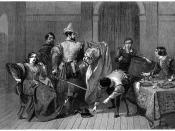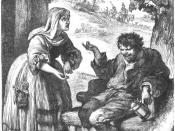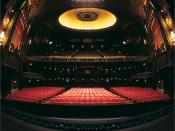A hundred yards or so southeast of the new Globe Theatre there is a vacant lot surrounded by a corrugated-iron fence marked with a bronze plaque as the site of the original Globe Theatre of 1599. A little closer to the new Globe one can peer through dirty slit windows into a dimly lighted space in the basement of a new office building, next to London Bridge, where about two-thirds of the foundations of the Elizabethan Rose Theatre can barely be made out.But the difficulty of seeing the earlier theatres in the shadows of the past better represents our understanding of performance in Shakespeare's theatre.
Acting style--realistic or melodramatic--stage settings, props and machinery, swordplay, costumes, the speed with which the lines were delivered, length of performance, entrances and exits, boys playing the female roles, these and other performance details remain problematic. Even the audience--rowdy, middle-class, or intellectual--is difficult to see clearly.
We know something of the mise en scene, but not nearly enough, and while the historians continue their painstaking researches the best general sense of Shakespeare in his theatre still comes from the little plays within his plays that across the centuries still give us something of the feel of performance in the Elizabethan theatre.
The internal play appears frequently in the early plays, Love labours lost, and A Midsummer nights dream The Taming of the Shrew, for example, is a theatrical tour de force, consisting of plays set within plays and actors watching other actors acting, seemingly extending into infinity. All the world is a stage in Padua, where the theatre is the true image of life. In the outermost frame-play a drunken tinker, Christopher Sly, is picked out of the mud by a rich lord and transported to his house. A little pretense is arranged, purely...


